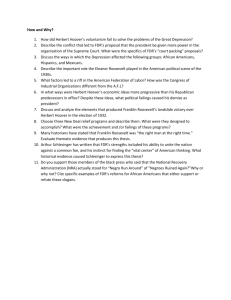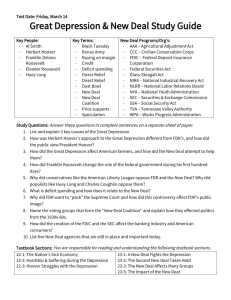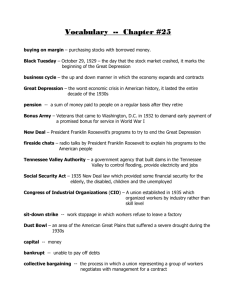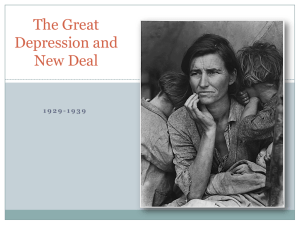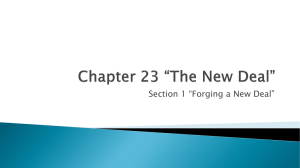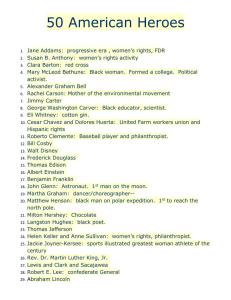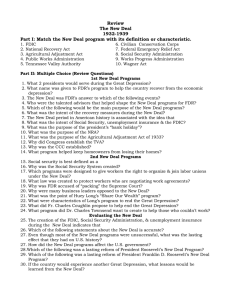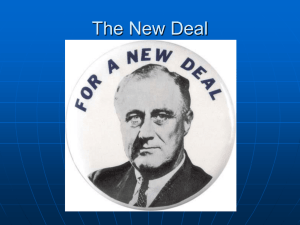Test 3 Review
advertisement
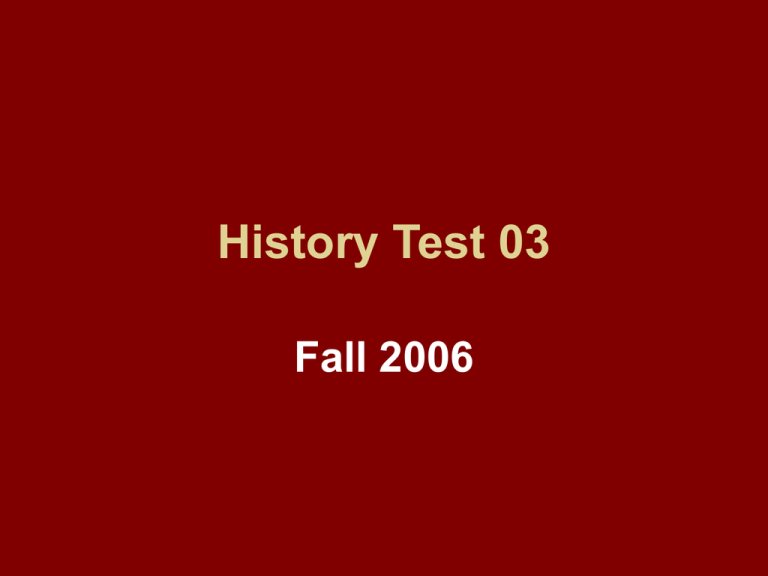
History Test 03 Fall 2006 Chapter 23 Question 01 • Definition: A Jamaican immigrant who promised to “organize the 400 million Negroes of the World into a vast organization to plan the banner of freedom in the great continent of Africa. • Marcus Garvey Question 02 • What two groups united, for different reasons, to create the political movement which passed prohibition? • Fundamentalist Protestants and Women Question 03 • Definition: An African American novelist who embodied the creative and artistic aspirations of the Harlem Renaissance in the 1920s. • Zora Neale Hurston Question 04 • What invention redefined American culture? • the automobile Question 05 • Definition: A serious novelist of the day and author of the Great Gatsby who, along with his wife Zelda, captured attention as the embodiment of the free spirit of the Jazz Age. • F. Scott Fitzgerald Question 06 • What does “buying stocks on margin” mean? • buying stocks with credit using the stock as collateral Question 07 • Definition: Local authorities indicted this Dayton, Tennessee school-teacher for teaching evolution in one of his classes. The jury found him guilty and assessed a small fine. • Scopes Trial Chapter 24 Question 08 • Definition: A vigorous reformer as governor of New York, he became the first Roman Catholic to win the nomination of a major party for president of the United States. • Al Smith Question 09 • What U.S. president never held either elective office or high military rank before being elected president? • Herbert Hoover Question 10 • Definition: Thousands of veterans, determined to collect promised cash bonuses early, came to Washington during the summer of 1932 to listen to Congress debate the bonus proposal. • Bonus Army Question 11 • In what Central American nation did a U.S. military intervention lead to a civil war led by Augusto Sadino? • Nicaragua Question 12 • Definition: A group of black youths accused of raping a white woman in Alabama who (the group) became a source of controversy and the focus of civil rights activism in the early 1930s. • Scottsboro Boys Question 13 • What treaty signed in 1929 sought to limit the size of the navies of the world’s most powerful countries? • Kellogg-Briand Pact Question 14 • What was President Herbert Hoover’s response to the economic crisis first evident in the Stock Market crash? • He hoped that voluntary actions by industries and businesses would solve the nation’s problems. Chapter 25 Question 15 • Definition: One of the New Deal’s most popular programs, it took unemployed young men from the cities and put them to work on conservation projects in the country. • Civilian Conservation Corps Question 16 • When Franklin Delano Roosevelt proposed his plans for dealing with the national economic crisis known as the Great Depression, where had he used many of those programs successfully before becoming president? • New York State Question 17 • Definition: Created in 1933 during the New Deal’s first hundred days, it was a massive experiment in regional planning that focused on providing electricity, flood control, and soil conservation to one the nation’s poorest regions, covering seven states (Virginia, N. Carolina, Georgia, Alabama, Tennessee, S. Carolina & Mississippi). • Tennessee Valley Authority Question 18 • Definition: Enacted on June 16, 1933, this emergency measure was designed to encourage industrial recovery and help combat widespread unemployment. • National Industrial Recovery Act (NIRA) Question 19 • Definition: A Populist but dictatorial governor of Louisiana (1928-1932), he instituted major public works legislation, and as a U.S. senator (1932-1935), he proposed a national “Share-the-Wealth” program. • Senator Huey P. Long Question 20 • What was most unique about Charles Coughlin, a very popular commentator who had a radio program which first supported but eventually criticized the programs of President Franklin D. Roosevelt? • He was a Catholic priest Question 21 • Definition: A labor leader who was president of the United Mine Workers of America (1920-1960) and the Congress of Industrial Organizations (1935-1940). • John L. Lewis Question 22 • Definition: An educator who sought improved racial relations and educational opportunities for black Americans, she was part of the U.S. delegation to first United Nations meeting in 1945. • Mary McLeod Bethune Question 23 • What did President Franklin D. Roosevelt state was the greatest threat to America’s economic survival? • fear Question 24 • Many of President Roosevelt’s critics stated correctly that his many social programs did not end the Great Depression, but rather the onset of World War II did. What significant fact is ignored in this criticism? • The Supreme Court found FDR’s more ambitious solutions, that may have succeeded, to be unconstitutional. Question 25 • Definition: Written by John Steinbeck and published in 1939, this novel depicts the struggle of ordinary Americans in the Great Depression, following the plight of the Joad family as it migrated west from Oklahoma to California. • The Grapes of Wrath Questions from the video FDR: The War Years Question 26 • Before World War II began, what happened in Spain? • Spain was engulfed in a civil war Question 27 • Who was Neville Chamberlain? • British Prime Minister Question 28 • When did World War II start? What year? • 1939 Question 29 • Who ran against FDR in 1944? • Thomas E. Dewey Question 30 • Where did FDR die? When? • Warm Springs, Georgia (1945)
